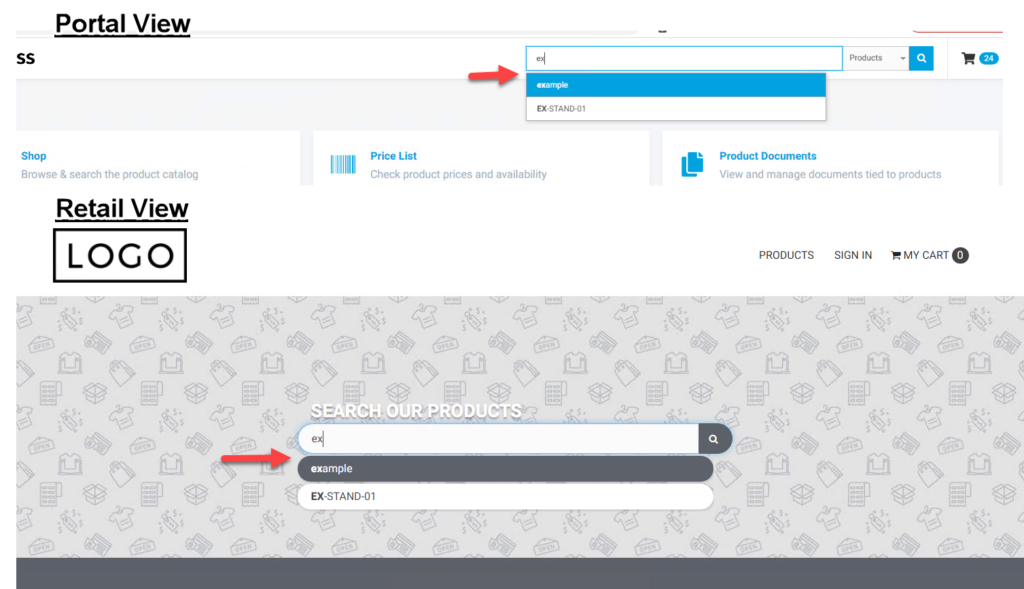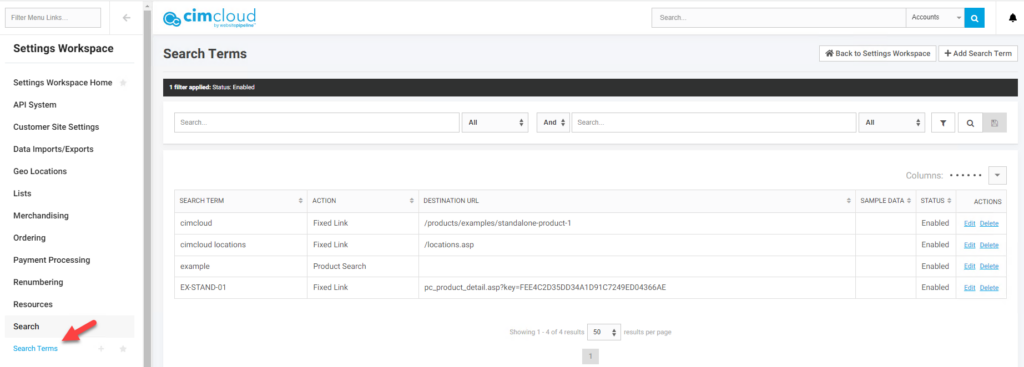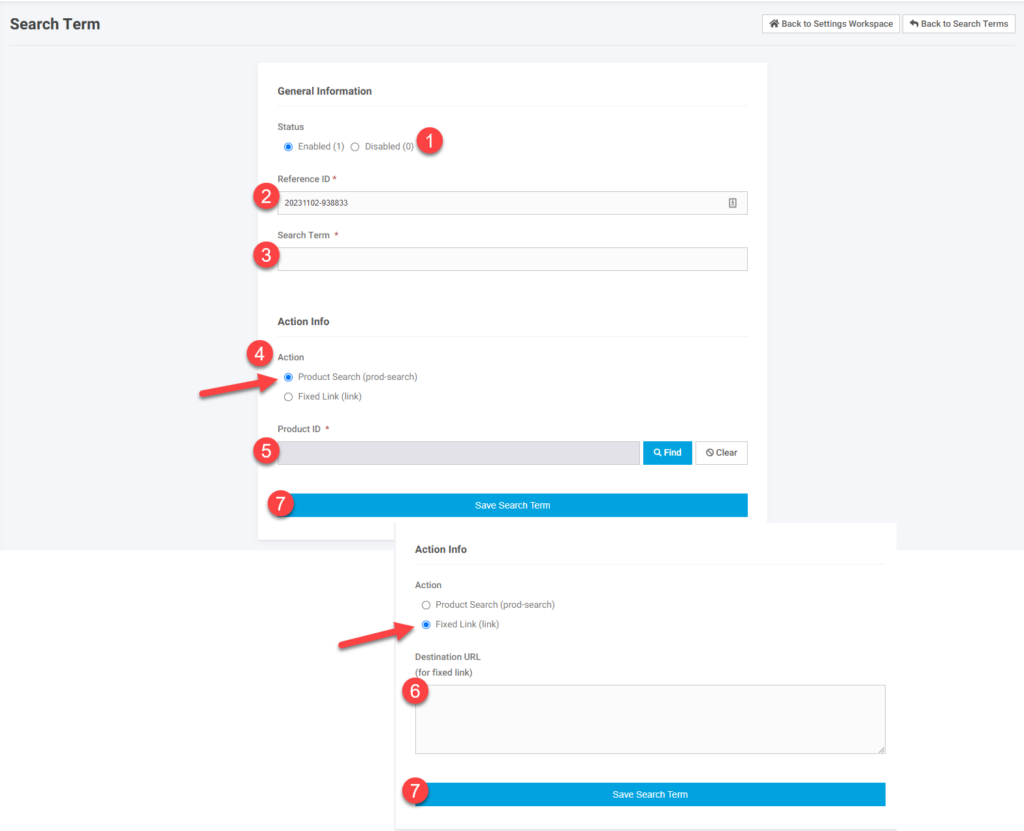Overview
As a standard part of the CIMcloud platform, sites are able to set up search terms that allow for type-ahead dropdowns that can, when searched, do a search on the selected term or direct to a specific page. The match (type ahead) to the created terms only matches based on what is matching the search term from the start of the search term. It will not match based on characters in the middle of the search term. For example, if a search term for “Widget” was set up, users will see this search term in the drop list if they start typing W – I -…. They will not see it if they type D – G – ….
The search term does not have to direct to a product page the search term set-up can direct to a category page, content page, or any page desired.
Some typical use cases are:
- Setting up search terms for each SKU so that users can start typing, select the sku from the droplist and the user is directed to the product detail page
- A partial term is set up for a family of products and the users is directed to a specific search
- A search term is set up for categories and the user is directed to a category page based on the search term
What a Customer Site User Sees
Users on the customer site will see the type-ahead droplist for the terms matching what they are typing. They can select the term and then hit search. The action taken will depend on the set-up of the search term. The search view examples below depends on if the site is set up with the portal or retail template, but the functionality is the same.

What a Settings Workspace Worker Sees (Set-up)
In the worker portal a worker with access to the settings workspace will see a menu option Settings Workspace > Search > Search Terms. The Search Terms menu option is where search terms can be managed.

To create a new search term click on the Add link in the menu or the button at the top of the page. On the resulting page you will want to set this up based on these following fields.

- Status (status) – Set this to enabled to show as a type ahead and be able to be selected. If disabled it will not show.
- Reference ID (ref_id) – This is the unique identifier for this record. You can use the default from the page or set anything that makes it unique. Since you would want a search term to be unique you can use the search term as the ref_id as long as there are no special characters. Special characters and spaces should be avoided in a ref_id field. If doing this with an upload you will need to set this value, it will not default for you.
- Search Term (search_term) –
- Action (action) – you can select Product Search (prod-search) or Fixed Link (link) that function as follows. The values in parenthesis are the values populated in the database for field “action” if doing an import.
- Product Search (prod-search) – This will do a product search for the value in the Search Term field. So this is like the user typing in the full value that is selected and doing a search. This is just allowing for the type ahead so the user does not have to type in the full value. This also currently enables the field product ID, which as noted below can be ignored and does not do anything.
- Fixed Link (link) – This allows you to determine the exact page that is redirected to instead of doing a search. The site will redirect to the page in the destination URL field that displays when this option is selected. As noted below the recommendation is to use the relative url if remaining on the site versus the full url.
- Product ID – This field displays when Product Search is selected and can be ignored.
- Destination URL (destination_url) – This is the page you want the user re-directed to when the search term is selected from the list. Ideally this is set up with a relative url (not using the sitename. So instead of “https://cimcloud.com/products/ex-productone” you would just want to enter “products/ex-productone”). This way it will work when the site goes live and when in different testing or sandbox environments. This should be set as the static page if static page exists.
- Save Search Term – Click this to save the record and have it display on the site if enabled.
Creating with uploads
If creating this with a spreadsheet import (Managing Data Through Spreadsheet Imports ) you will upload the spreadsheet (in format .csv) to table search_terms with the fields noted in parenthesis above

